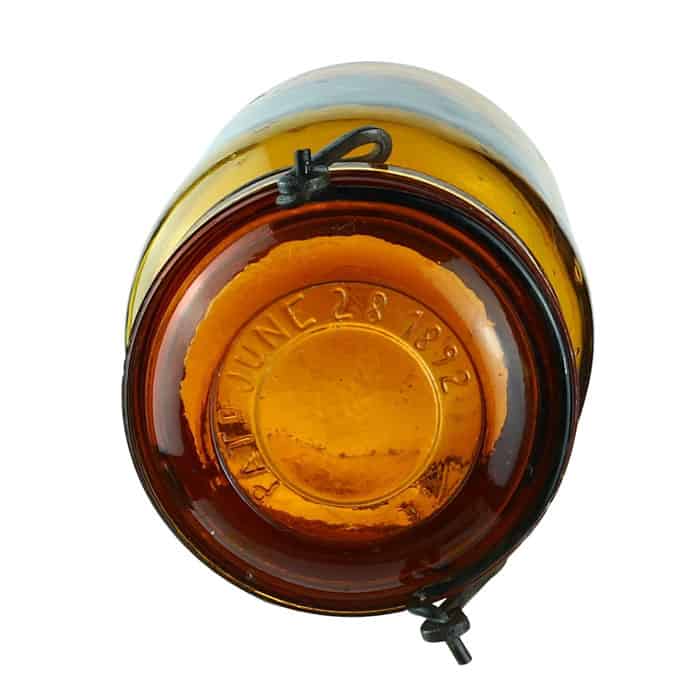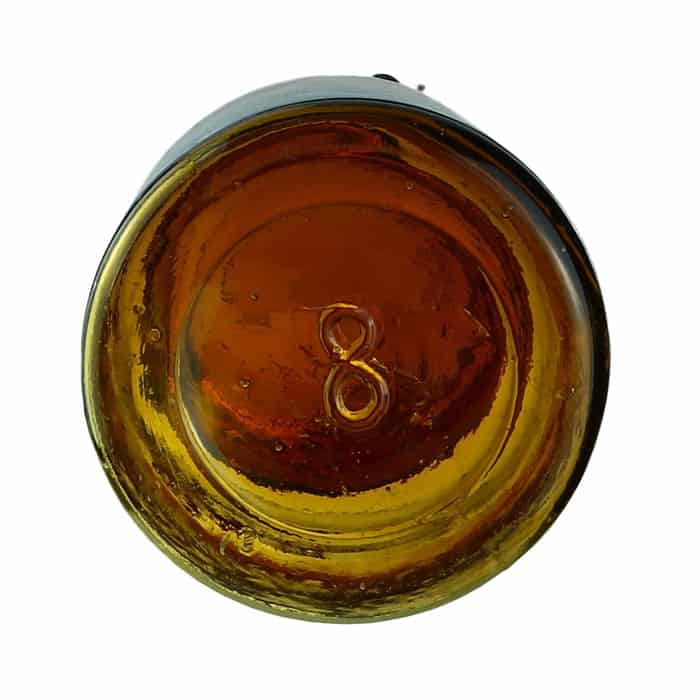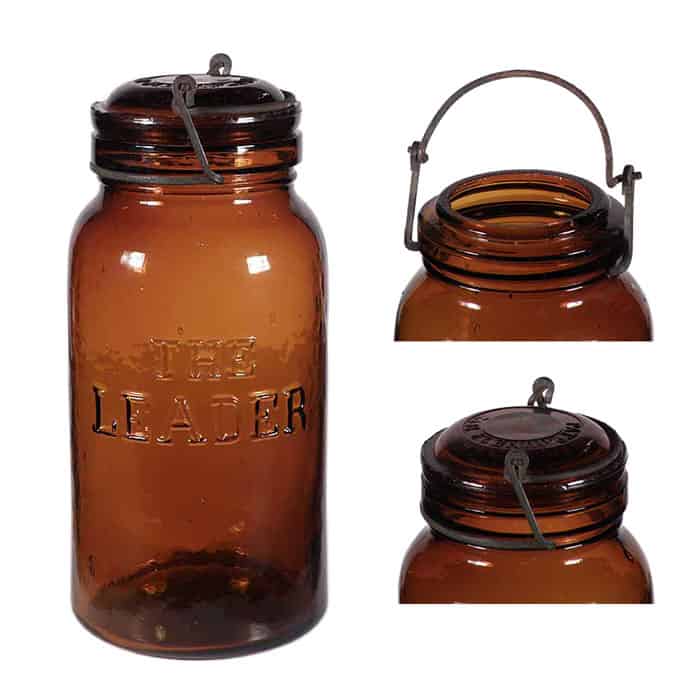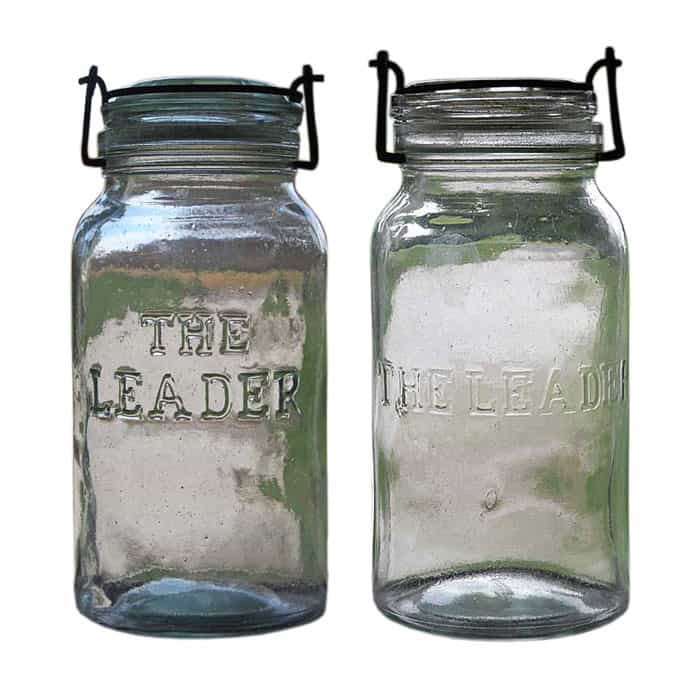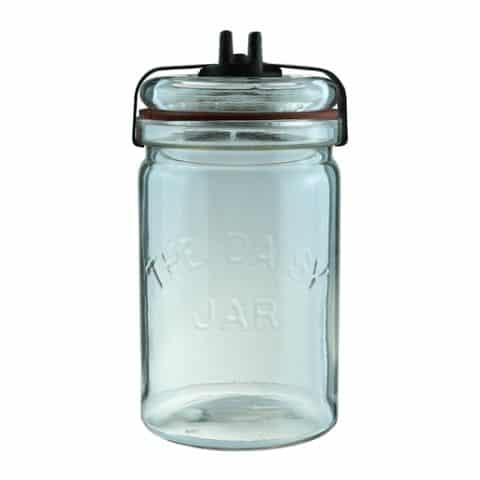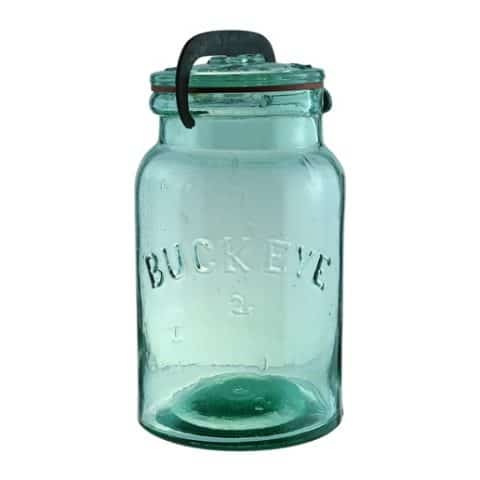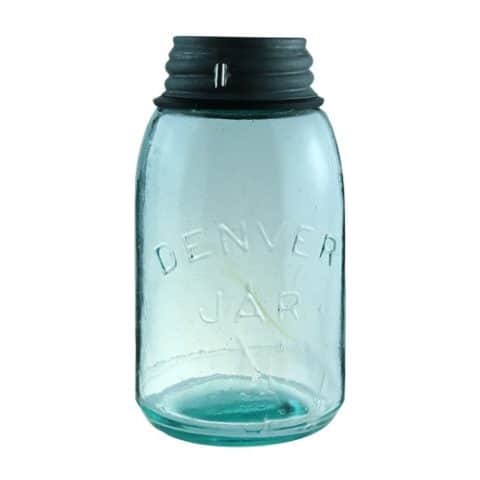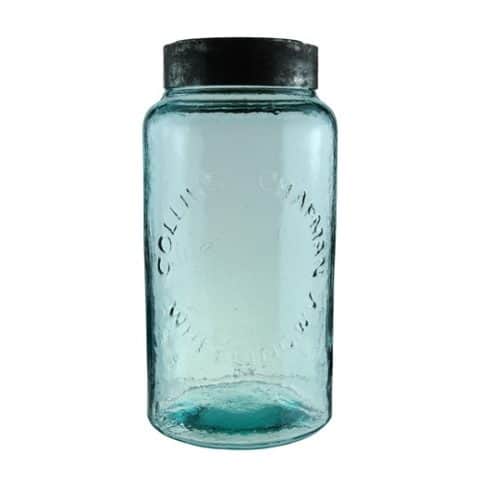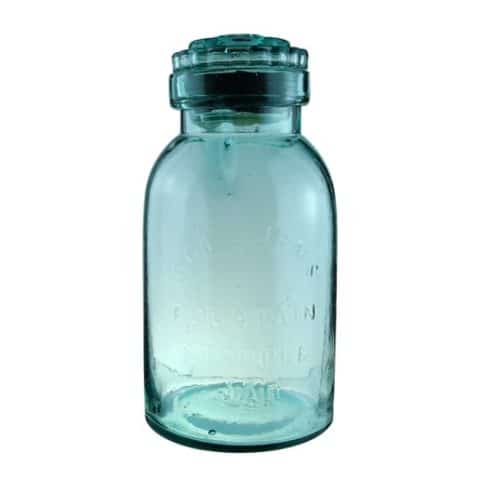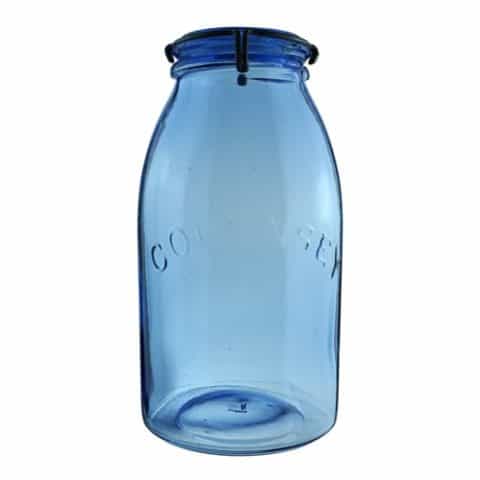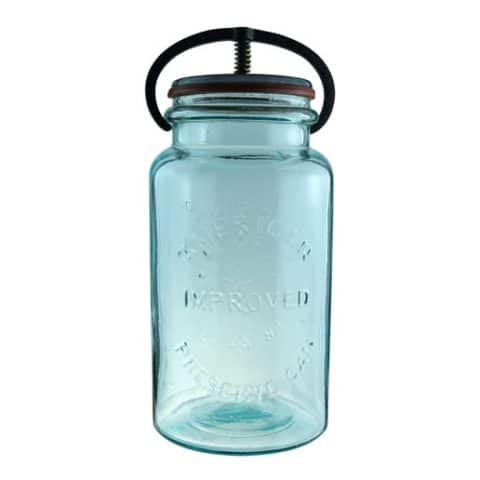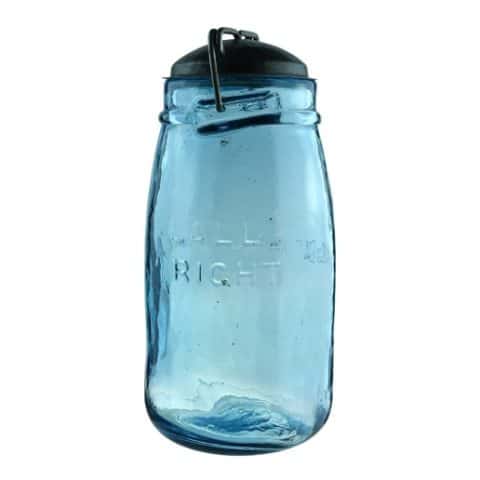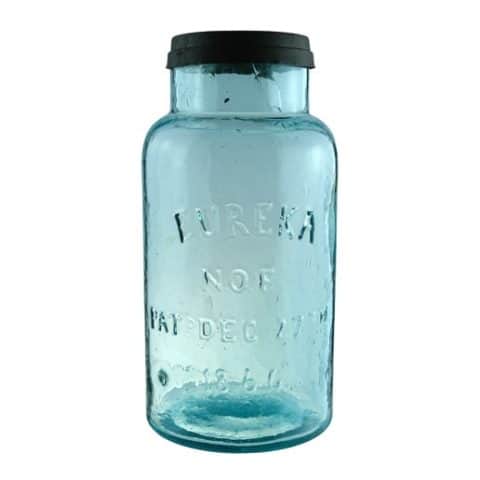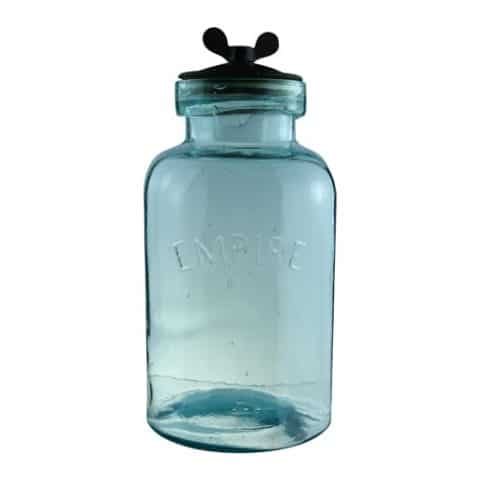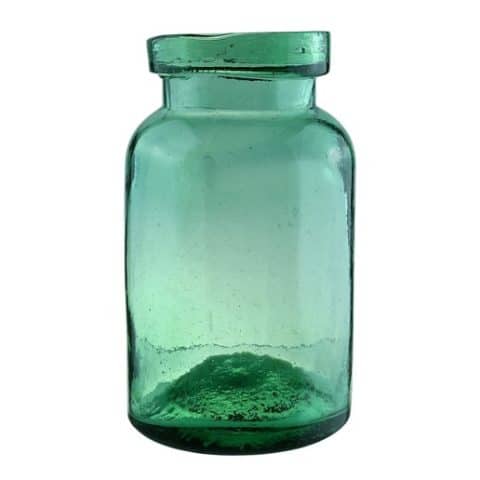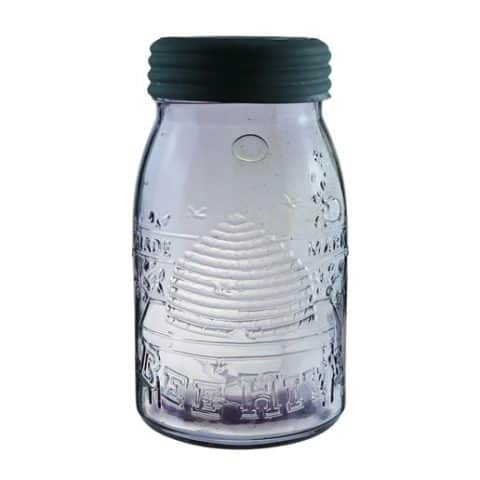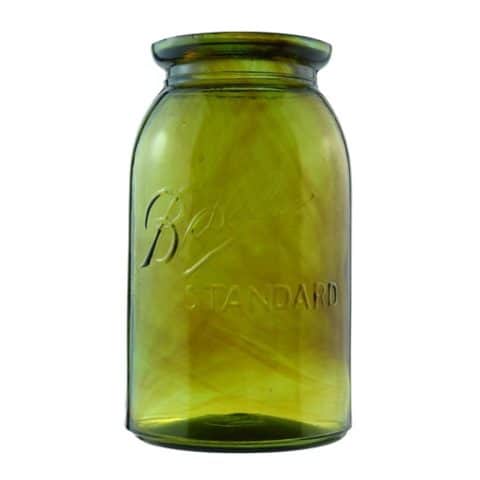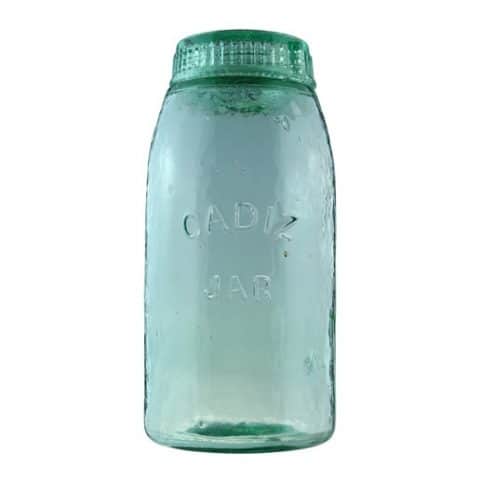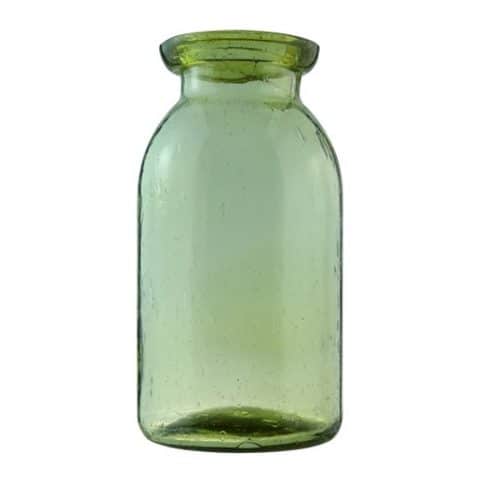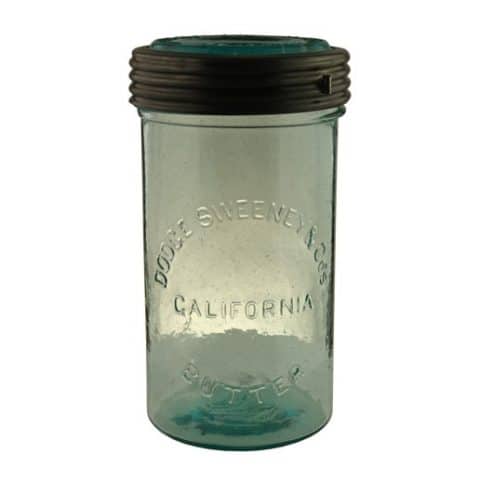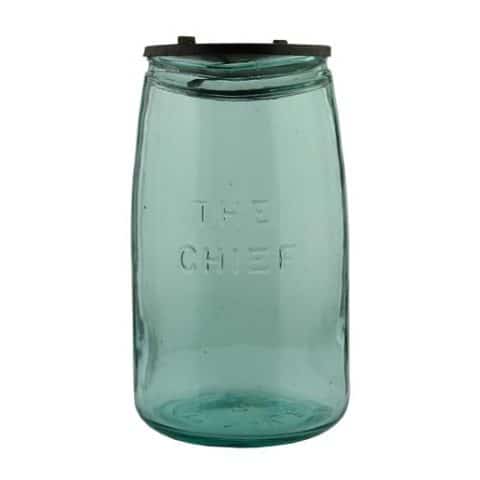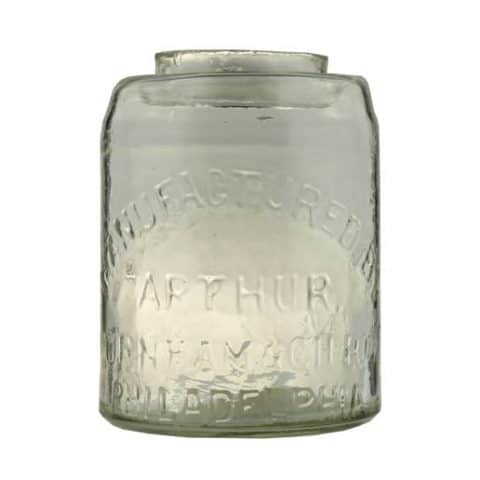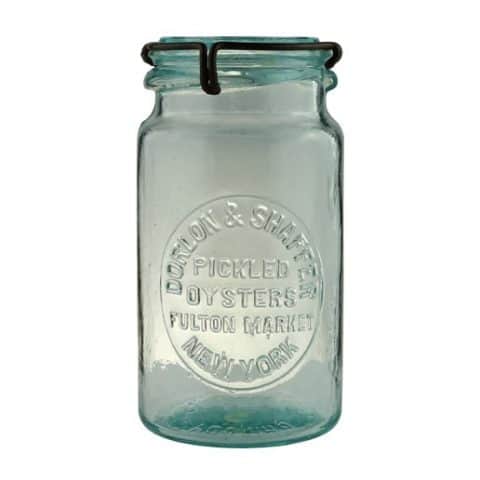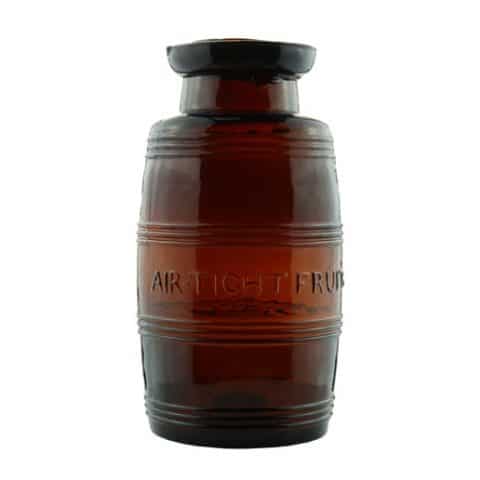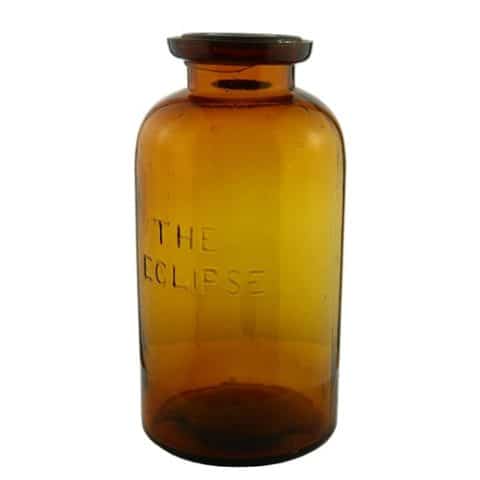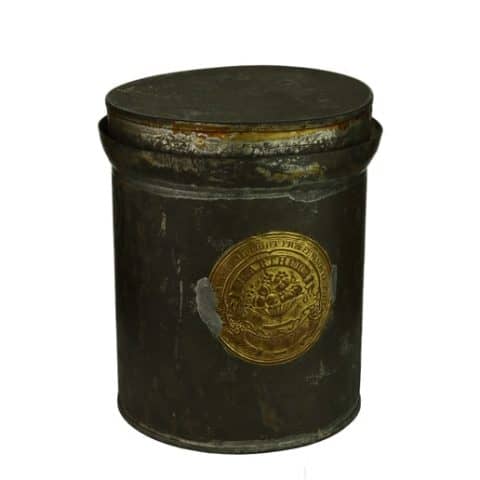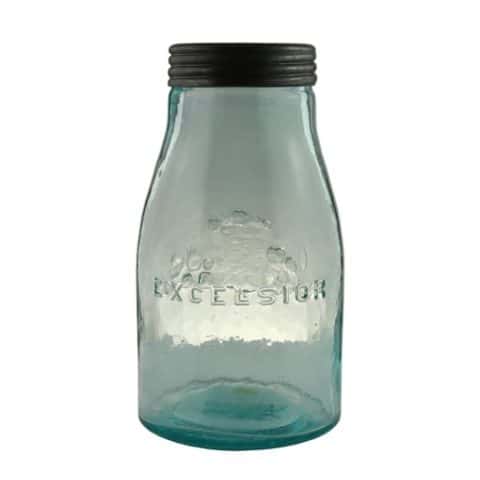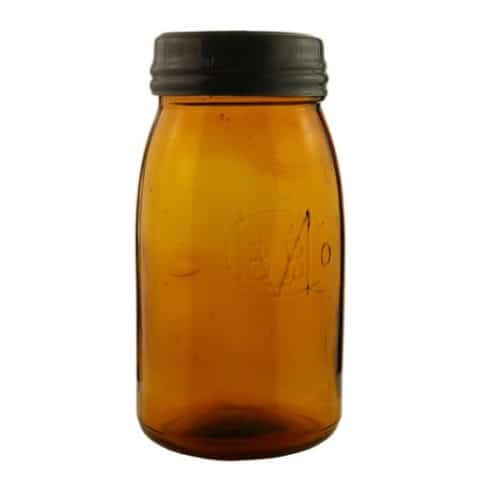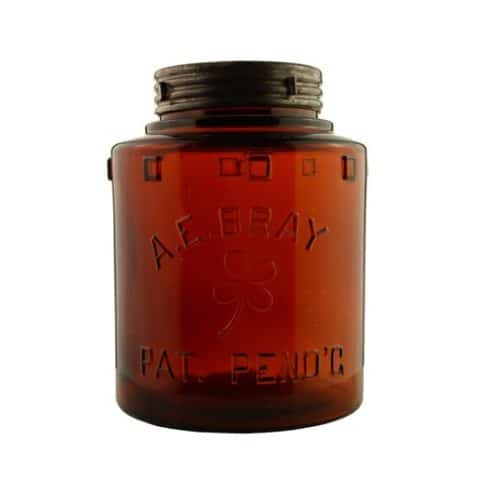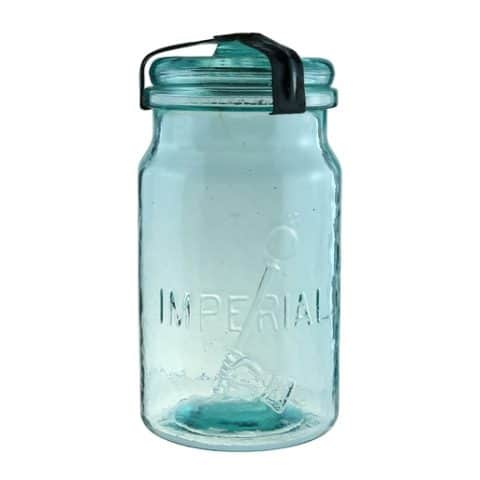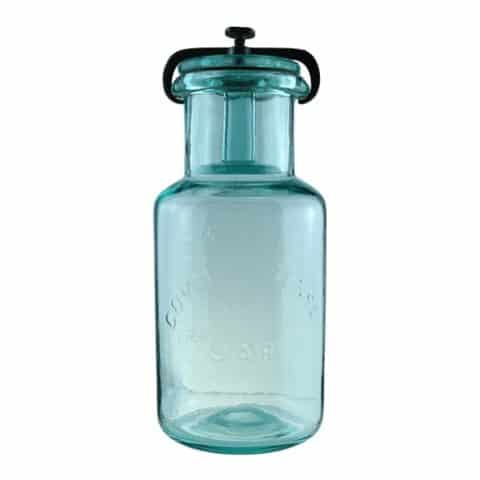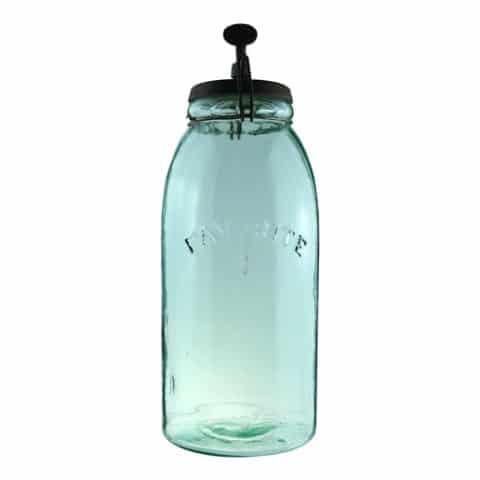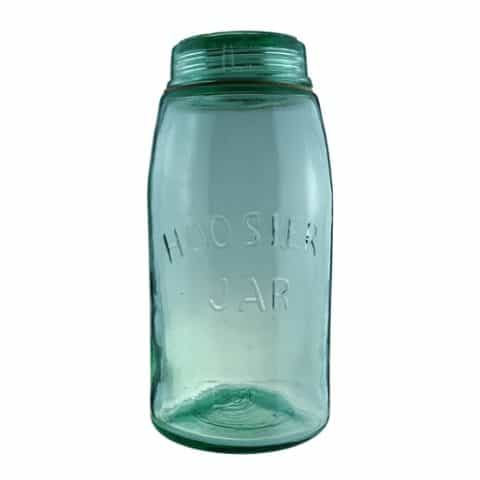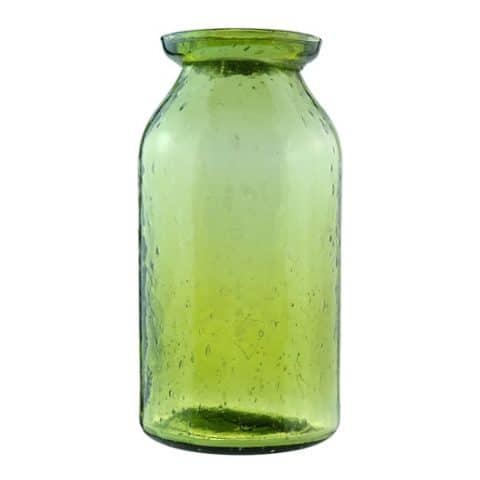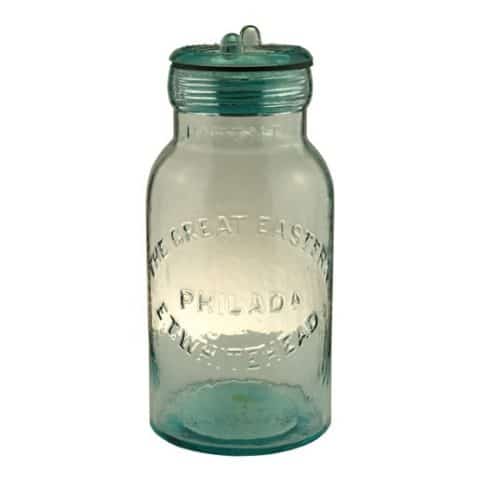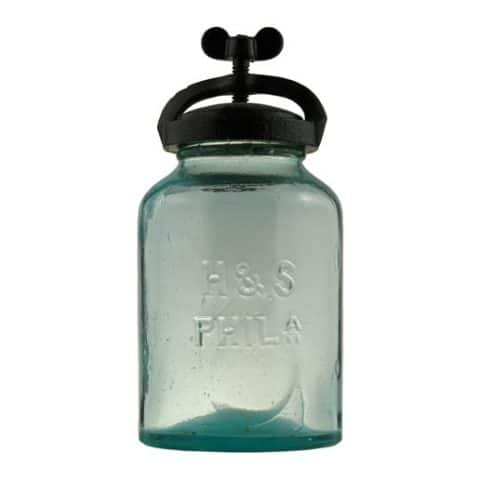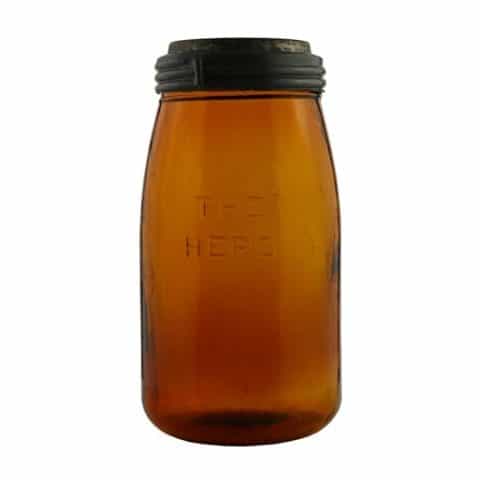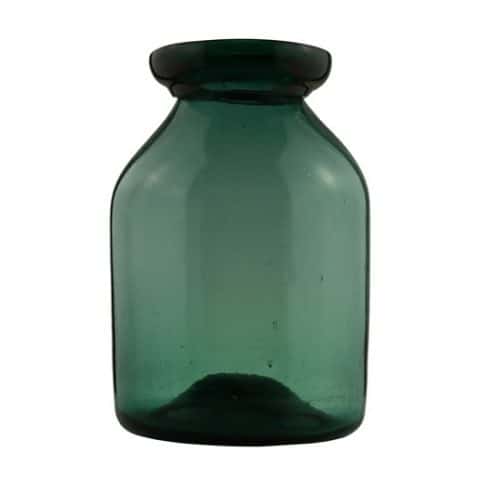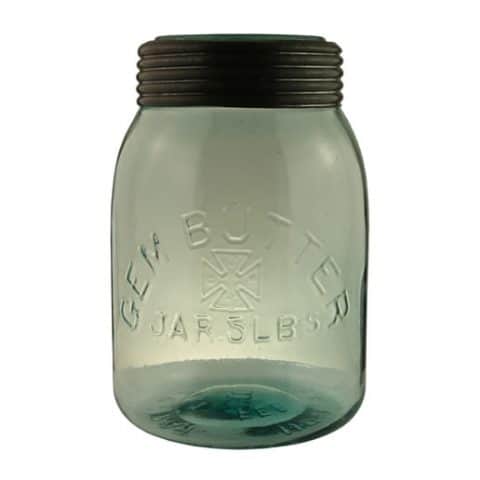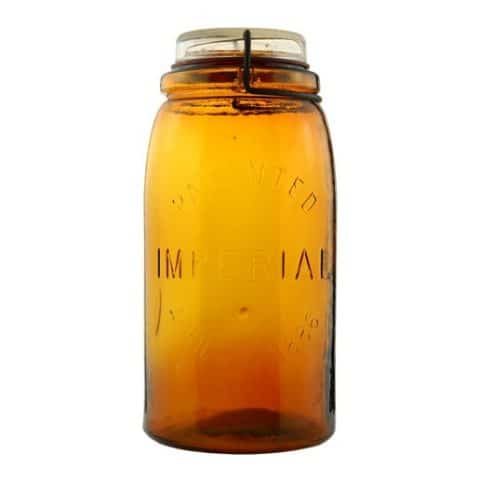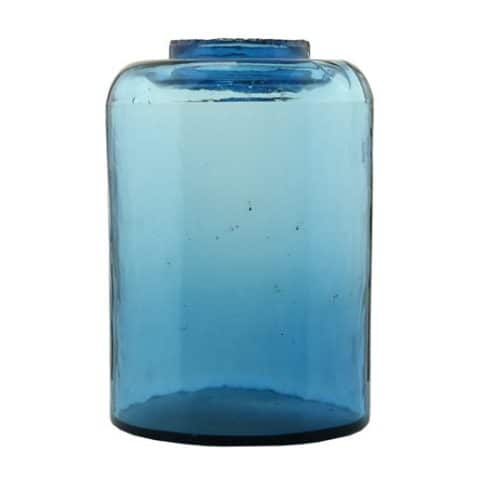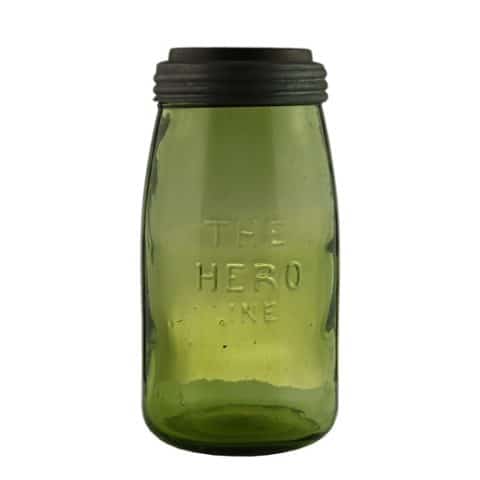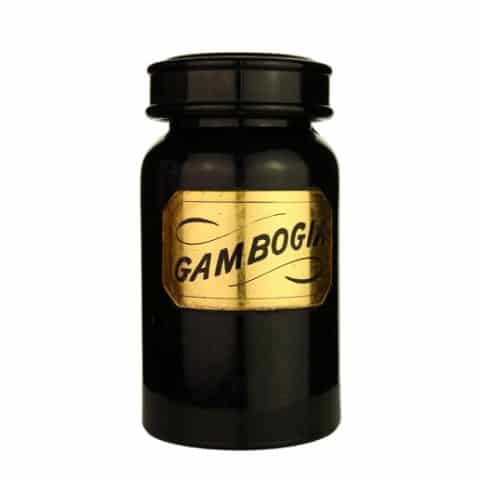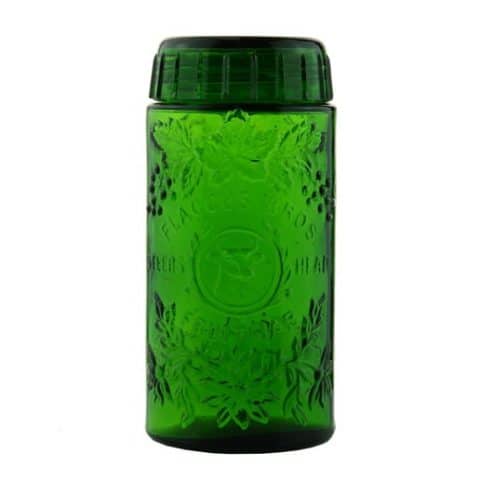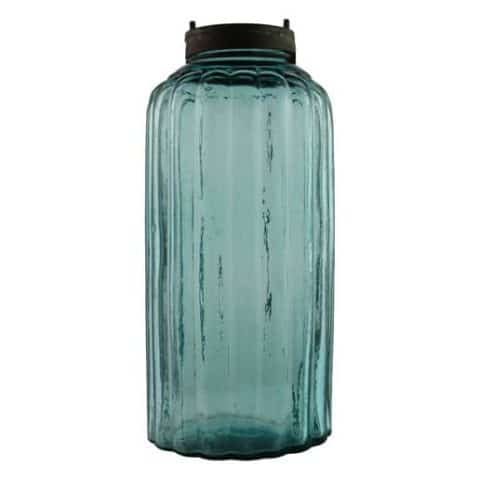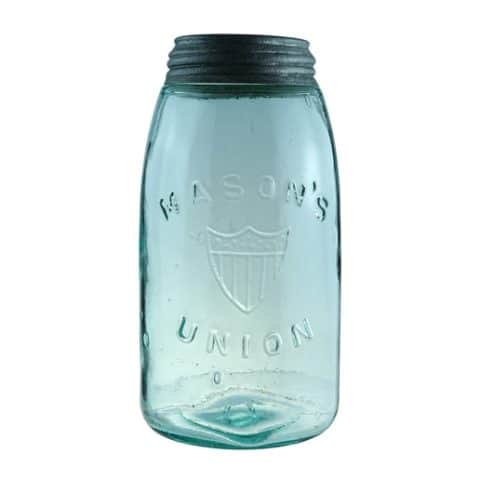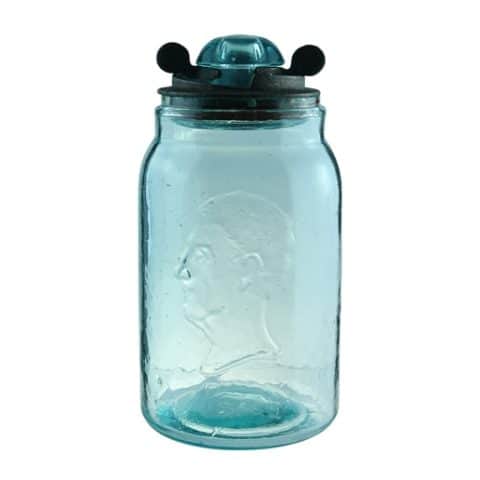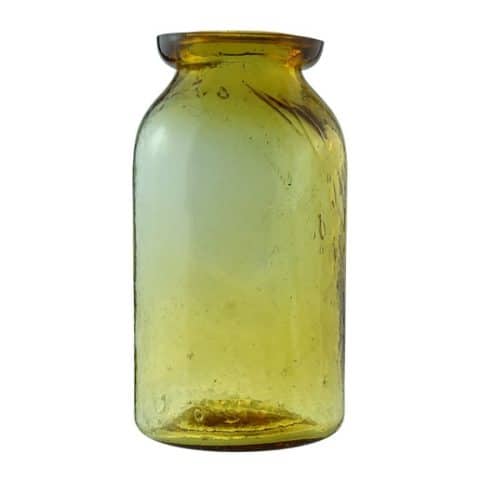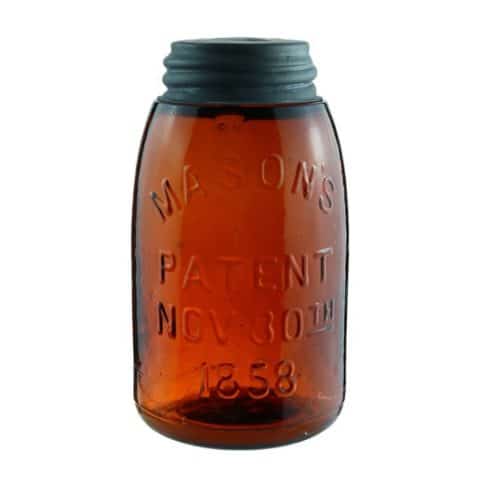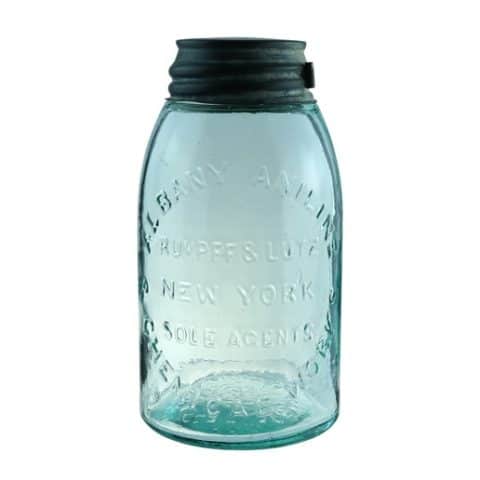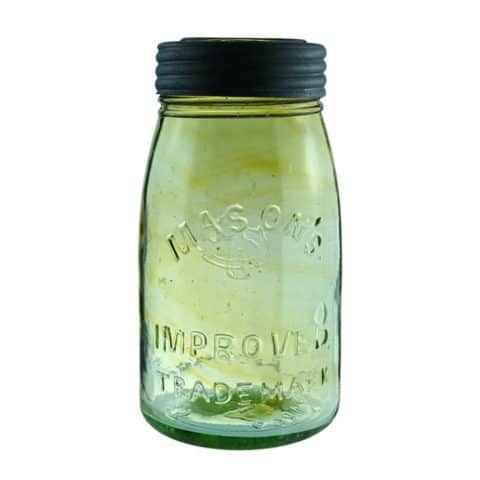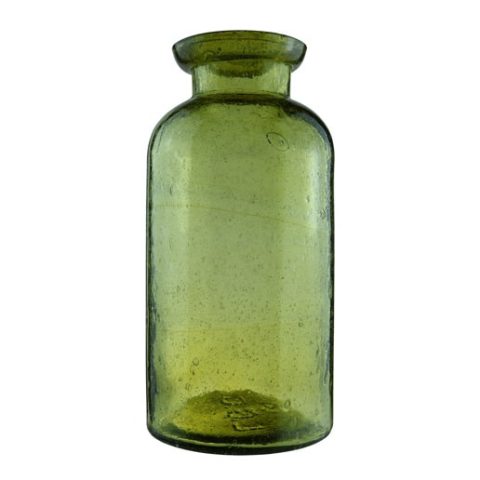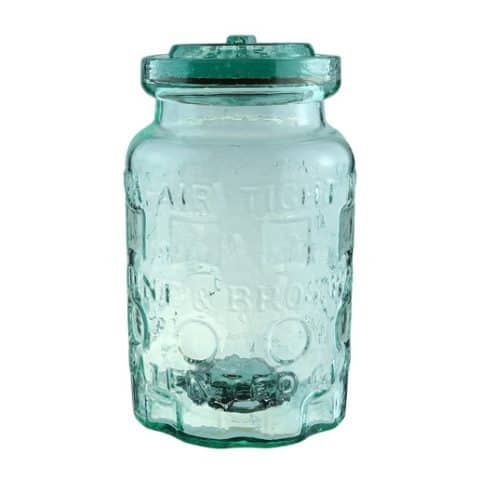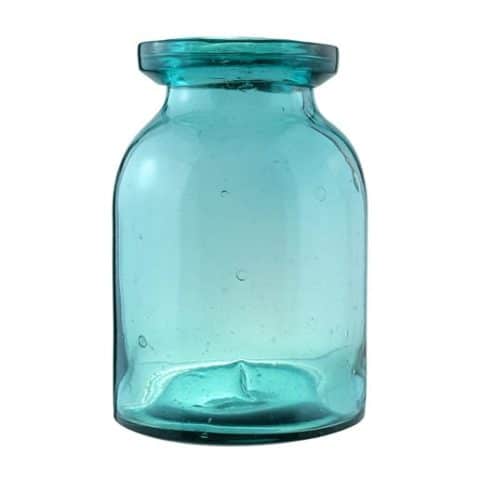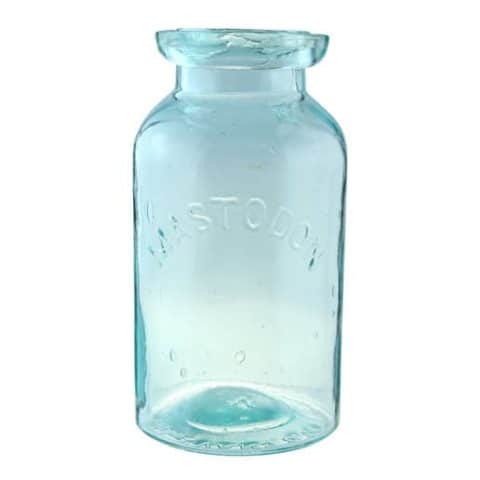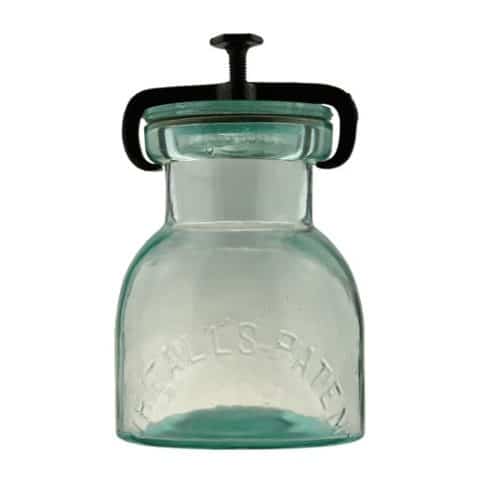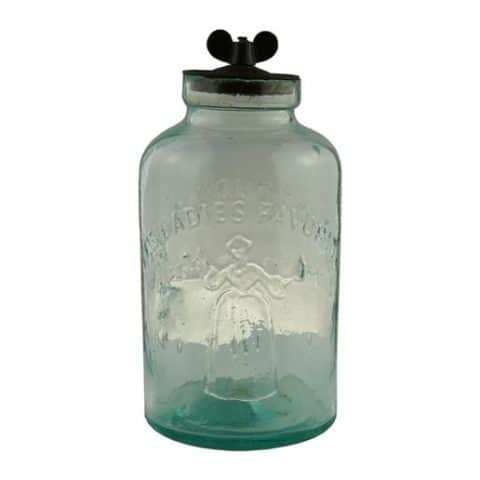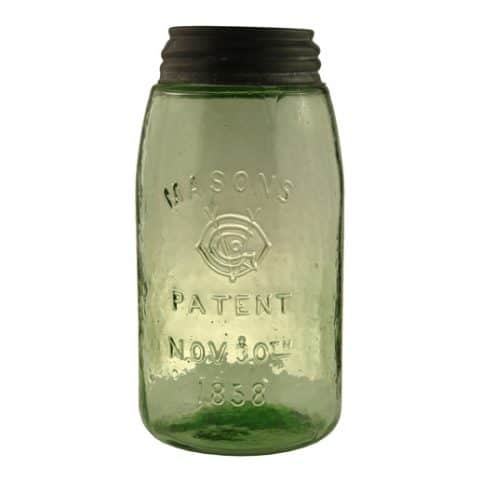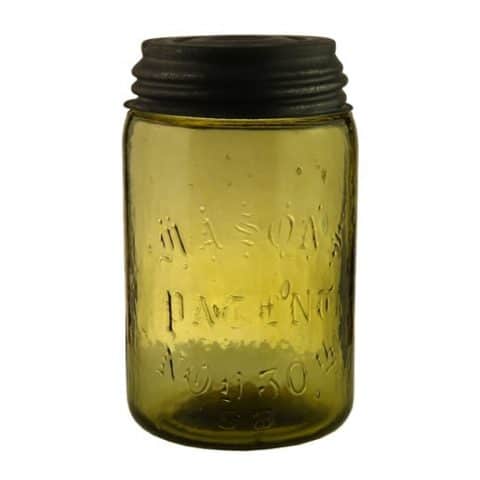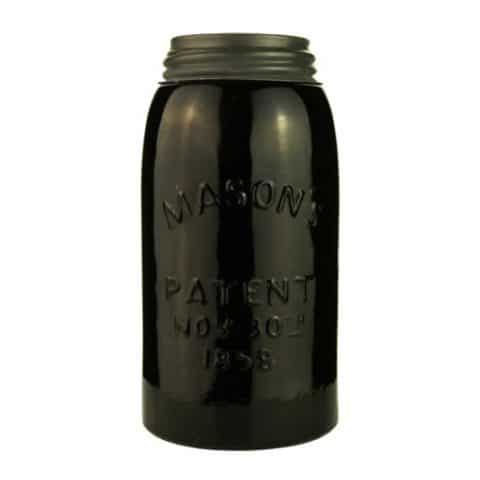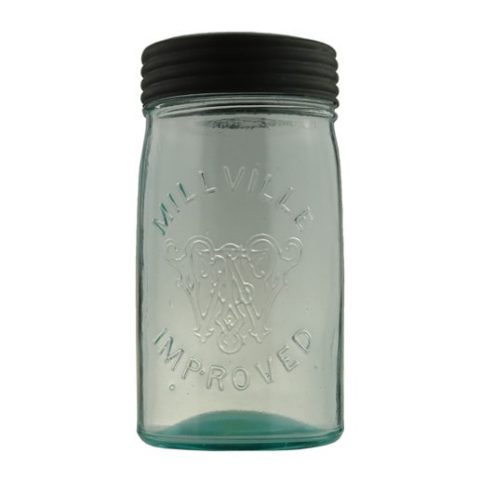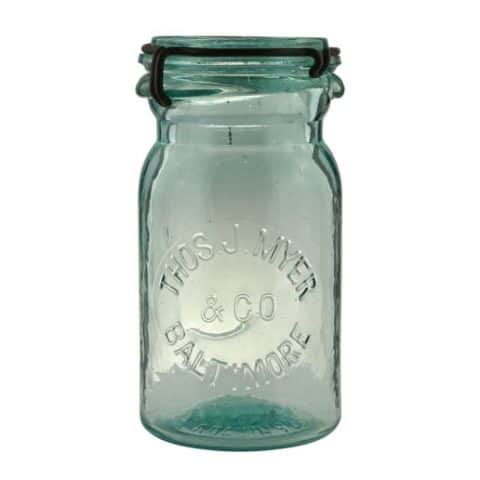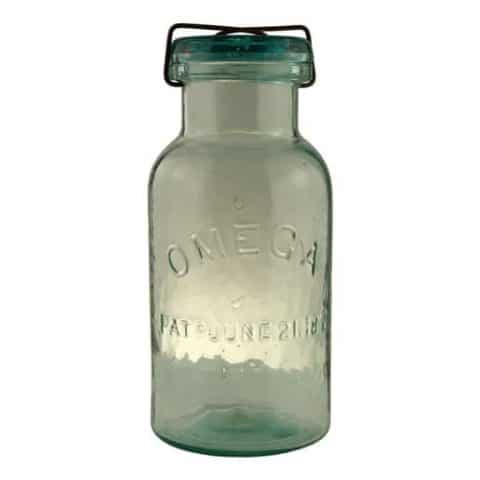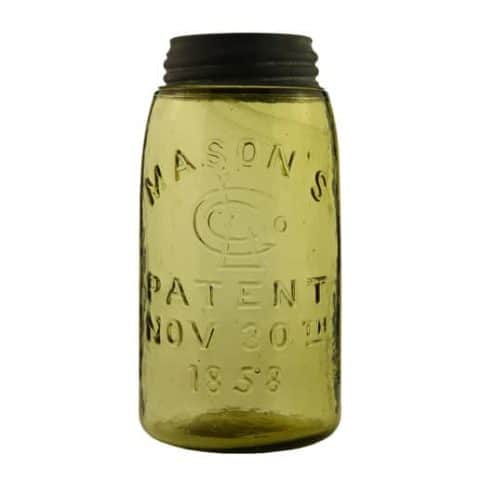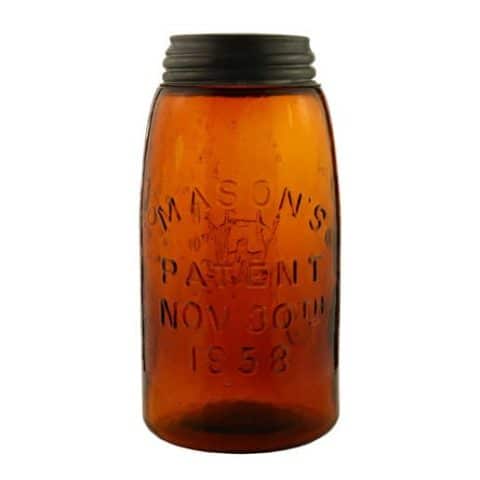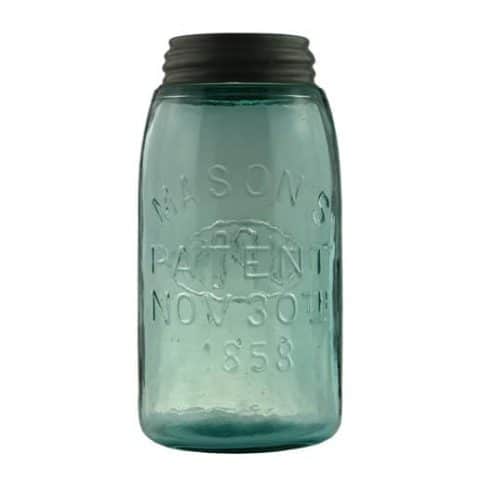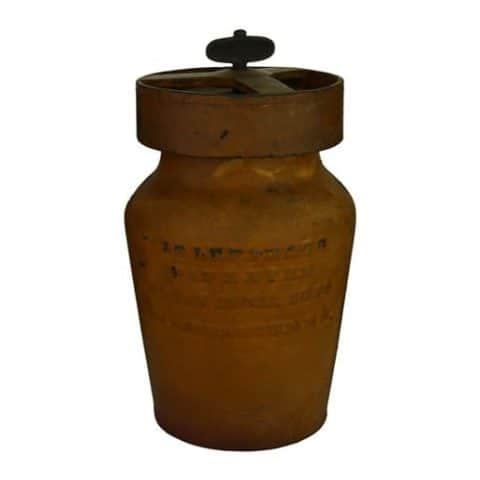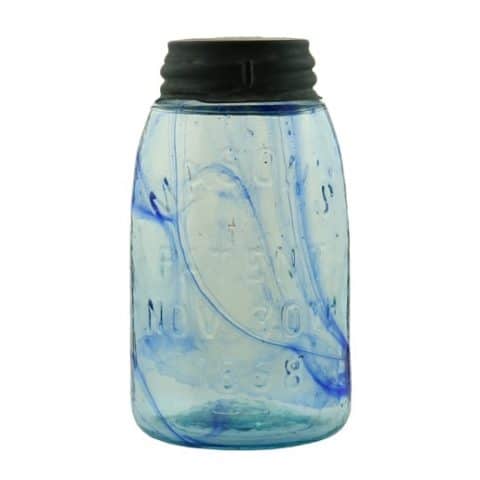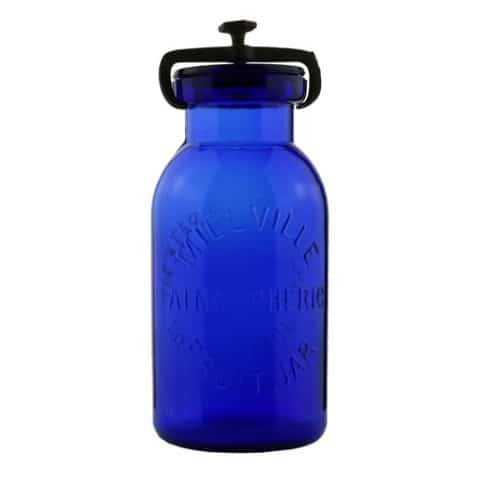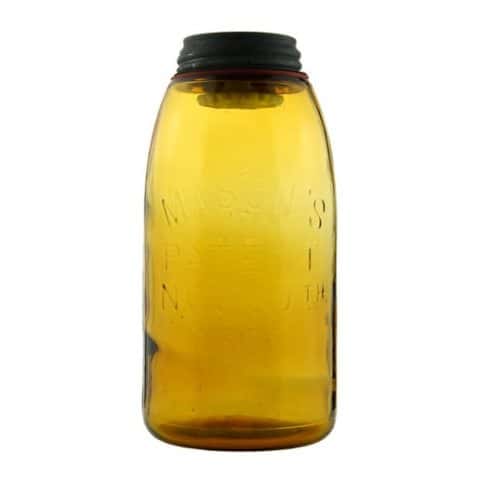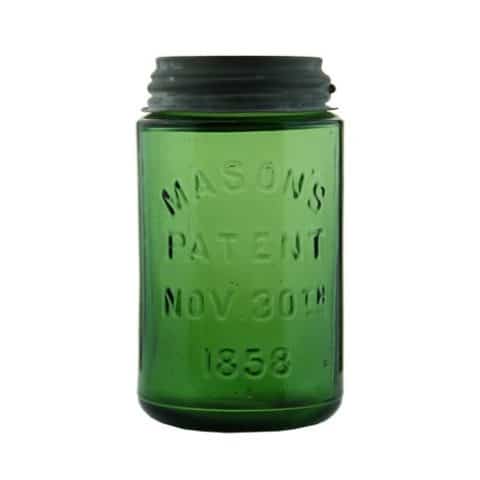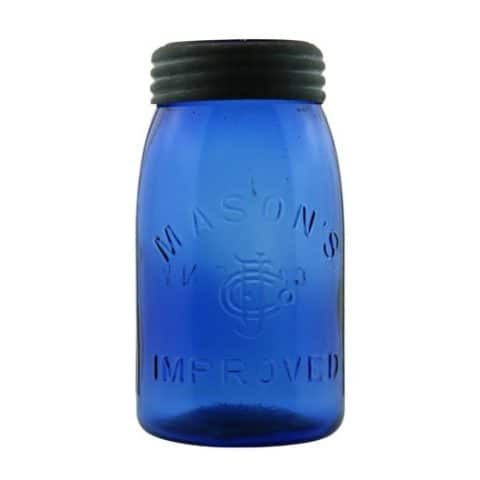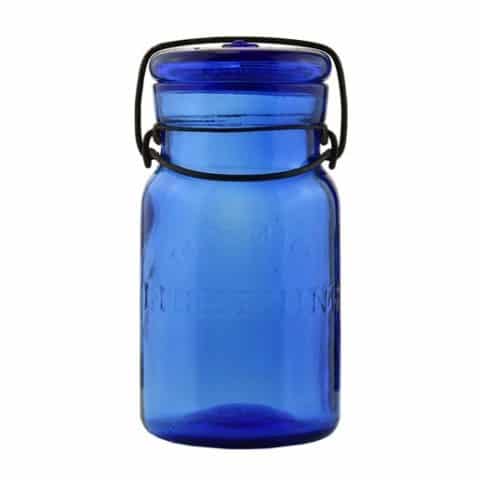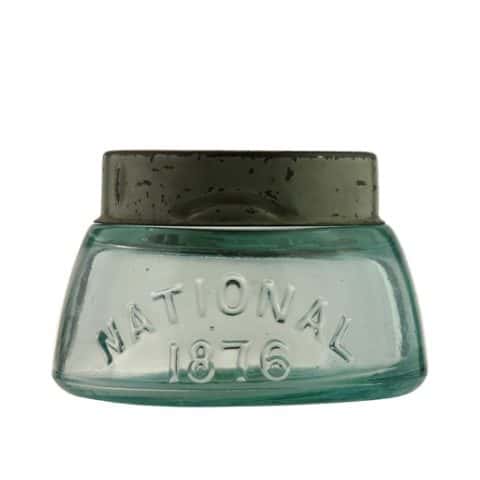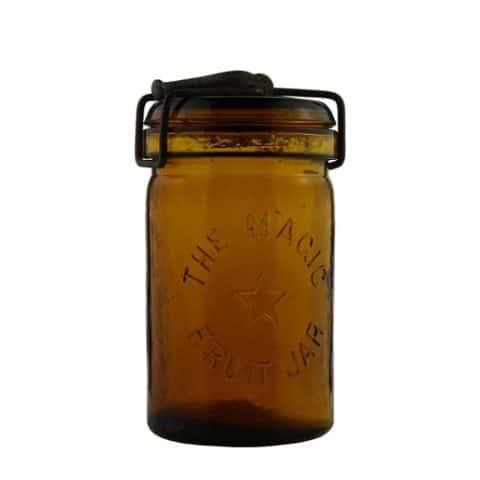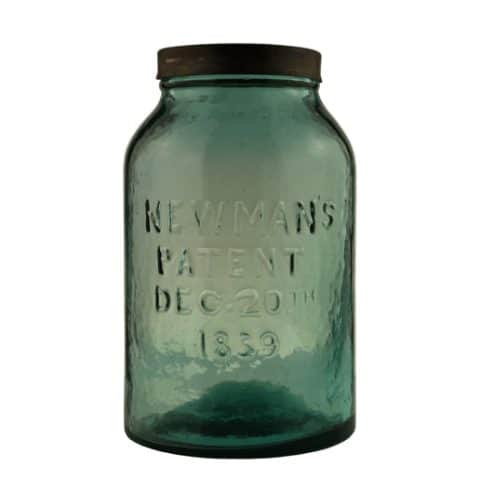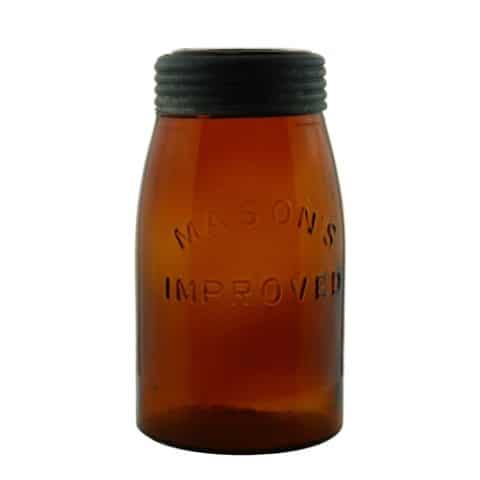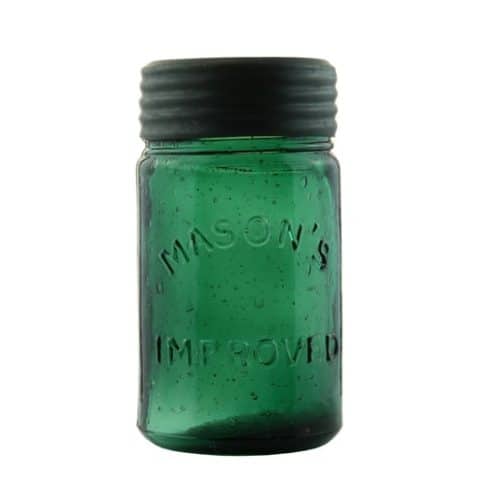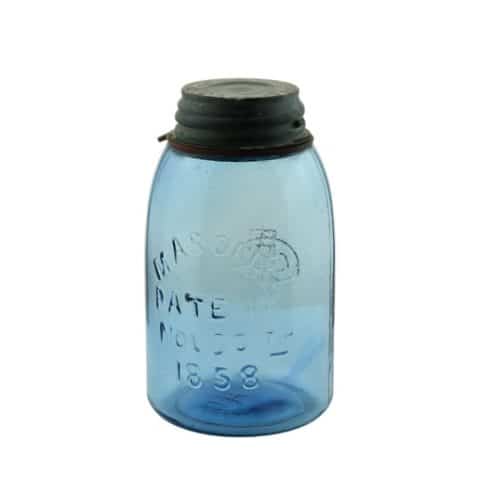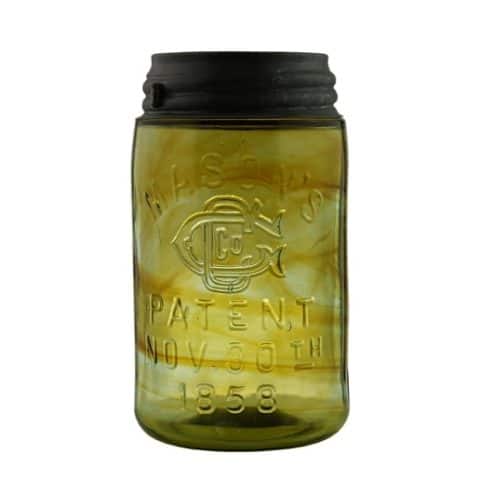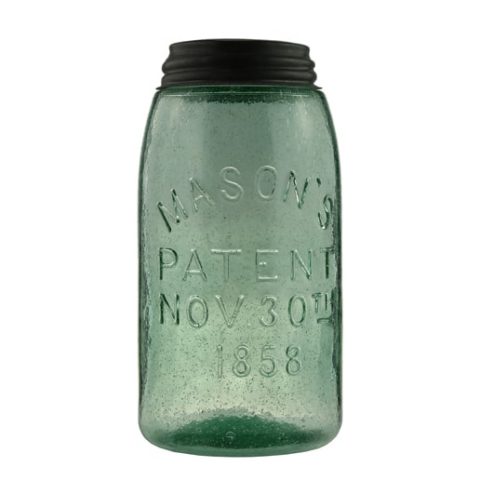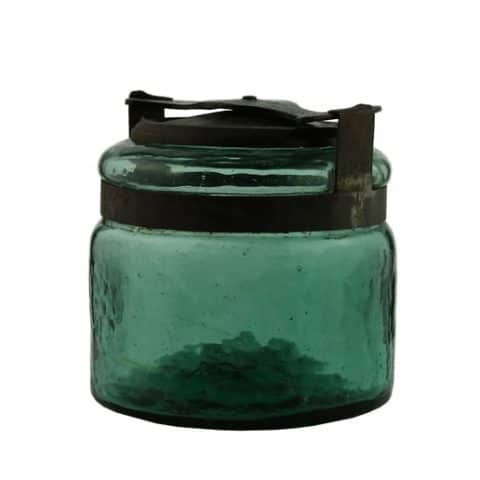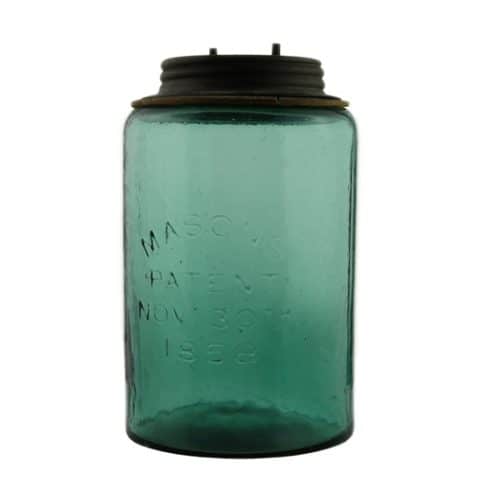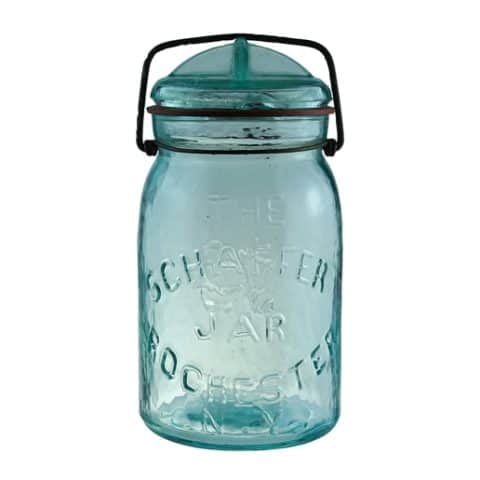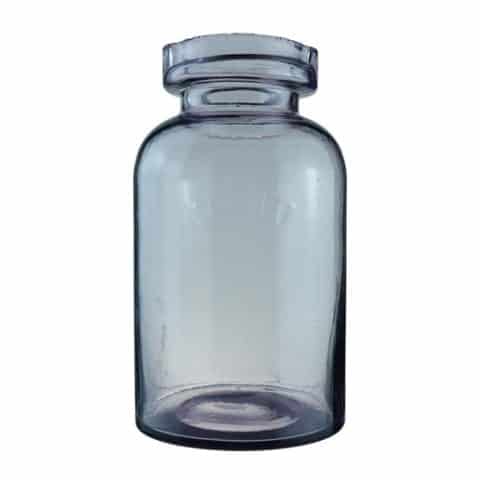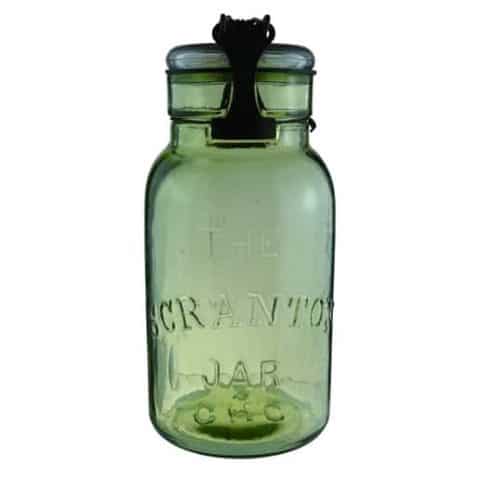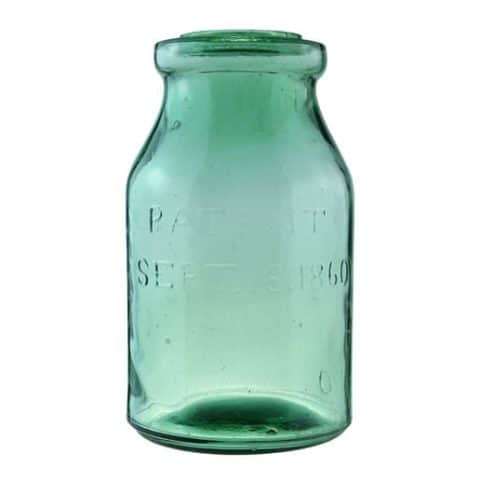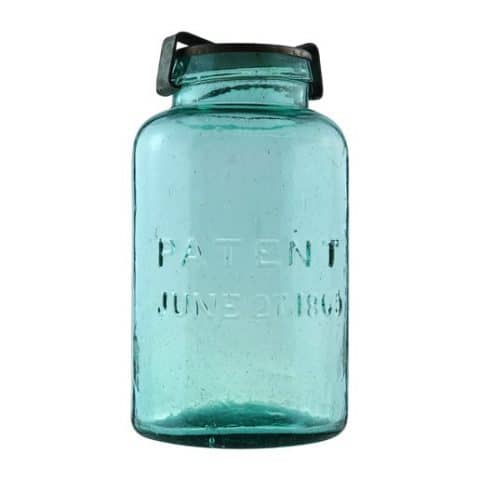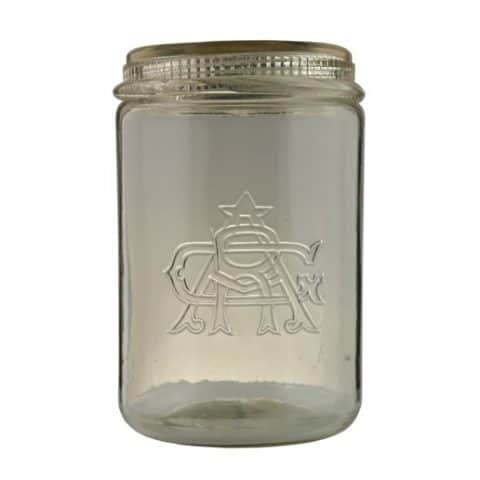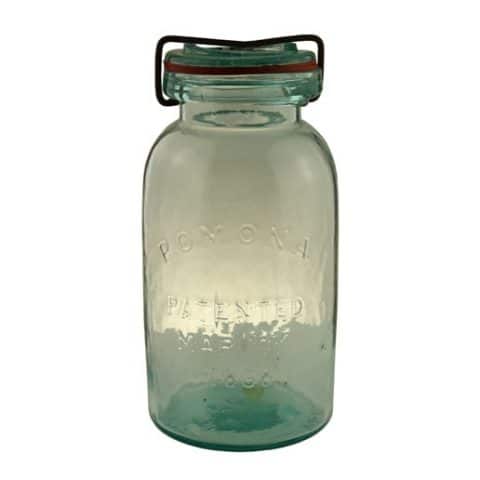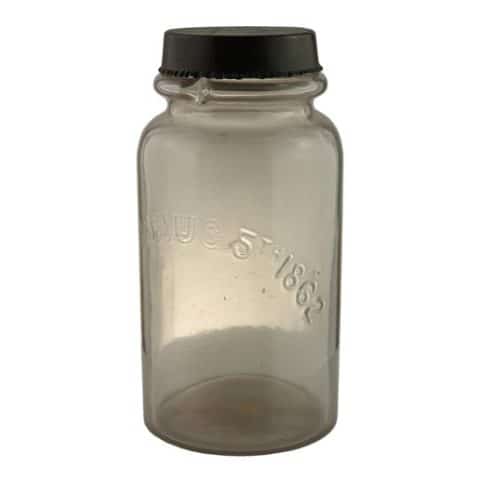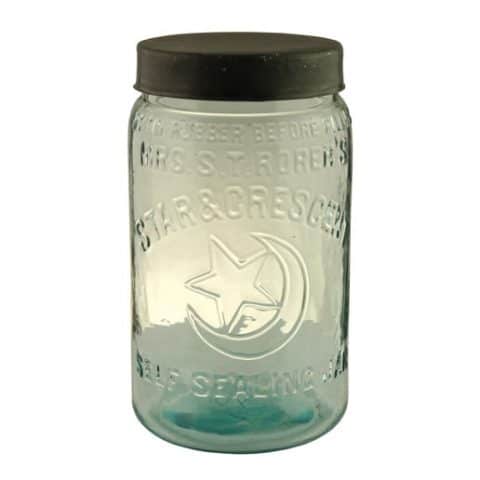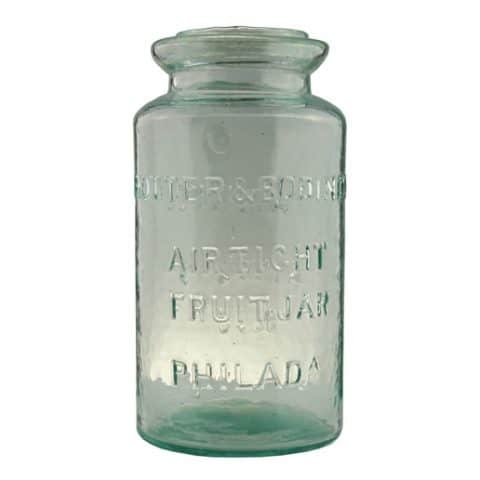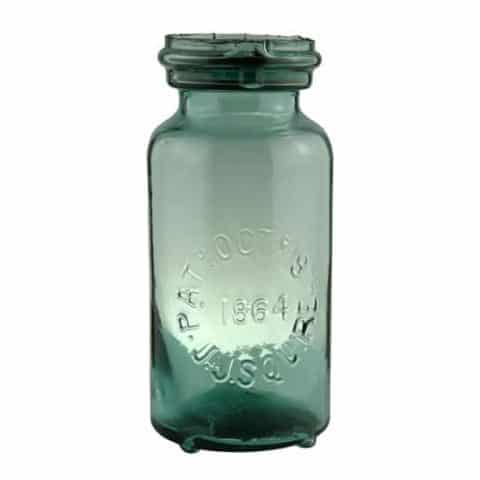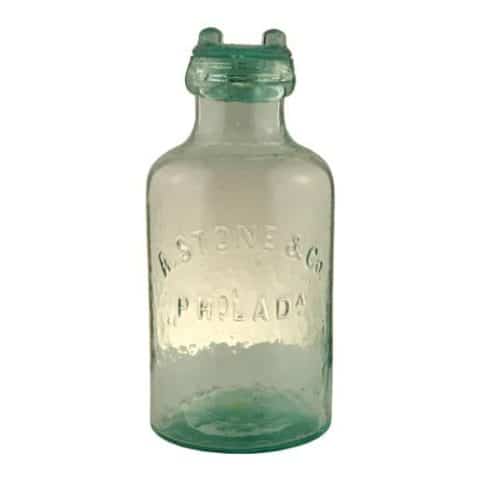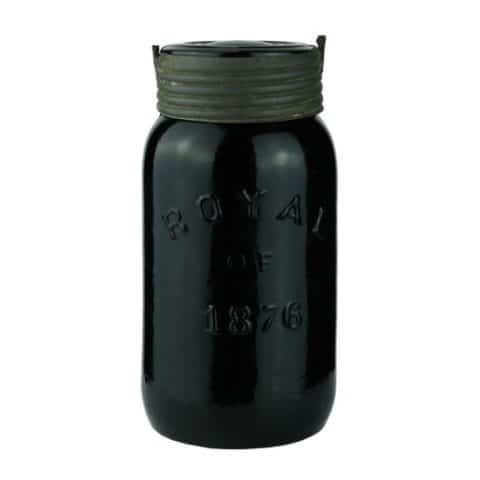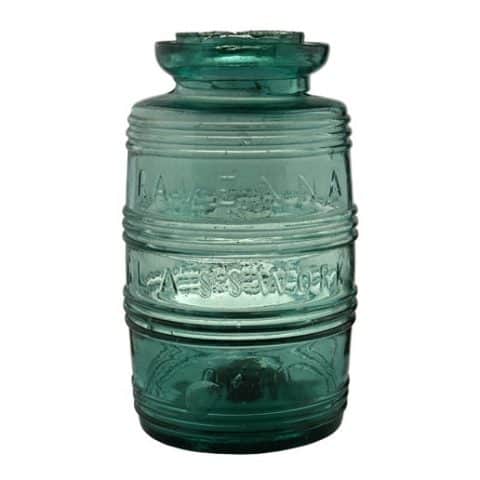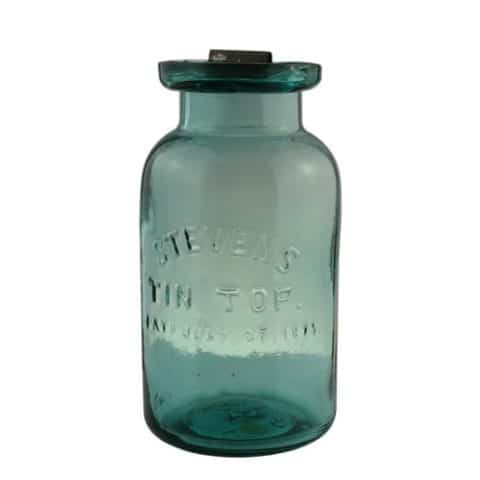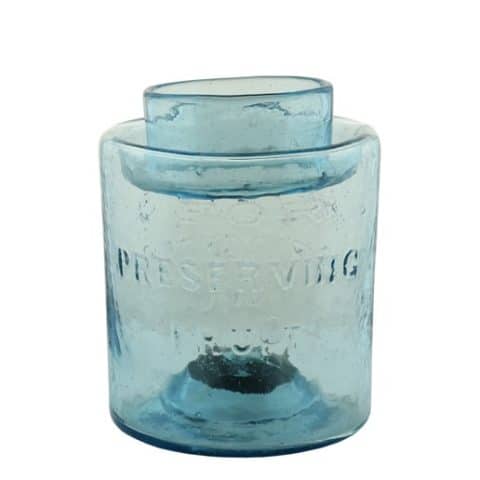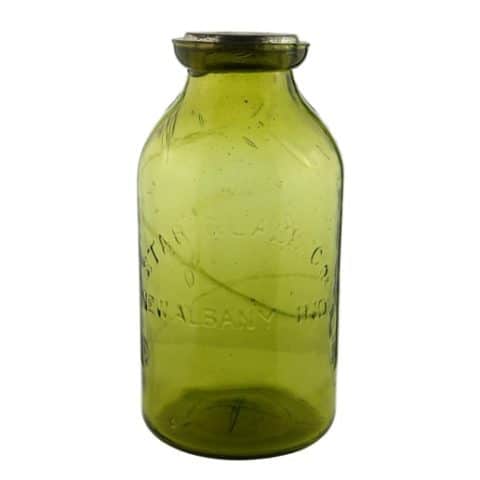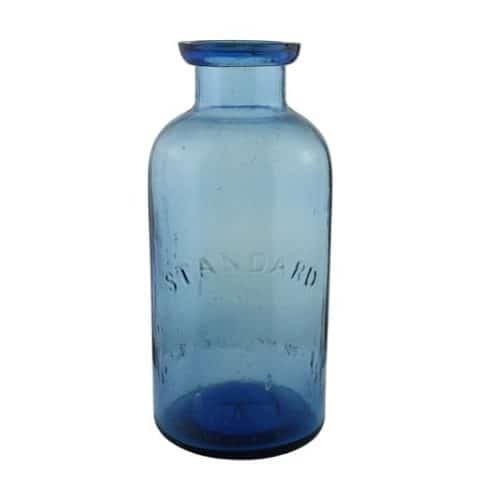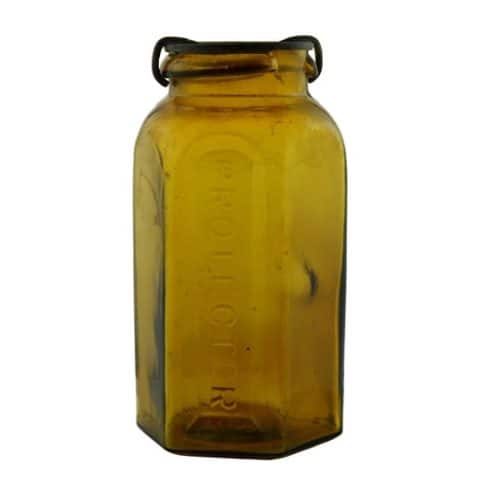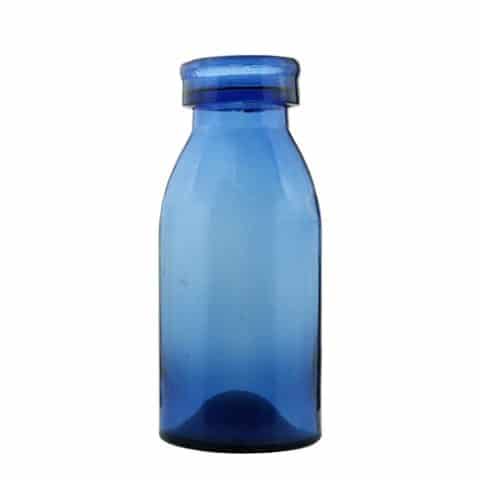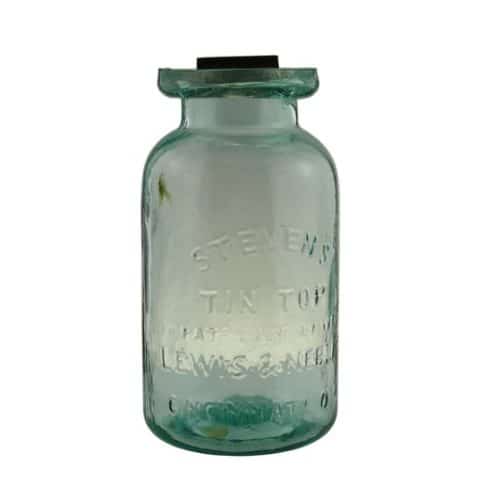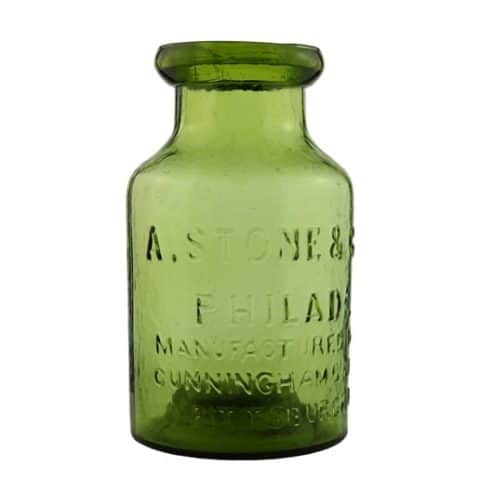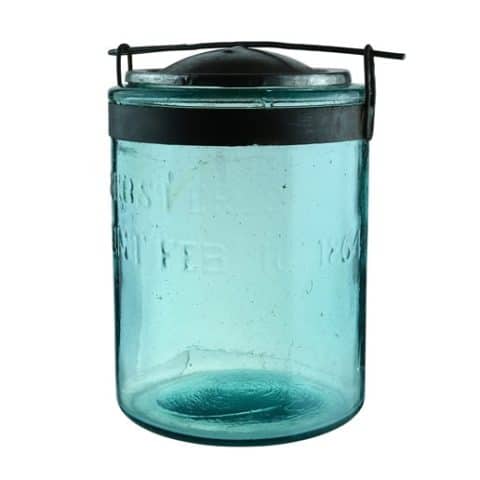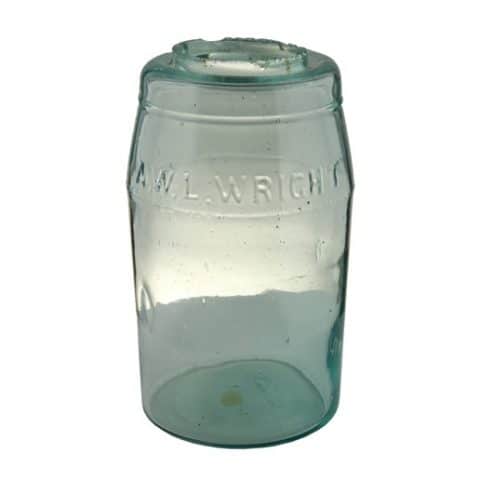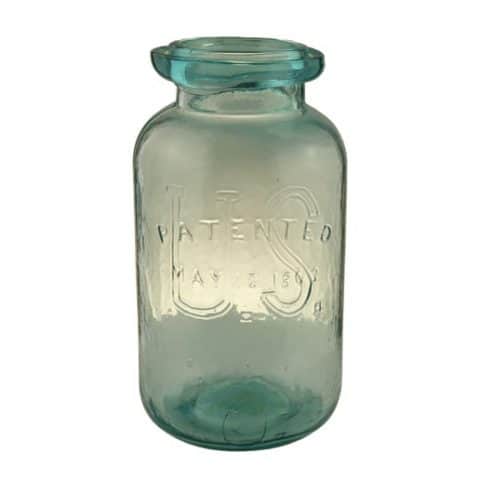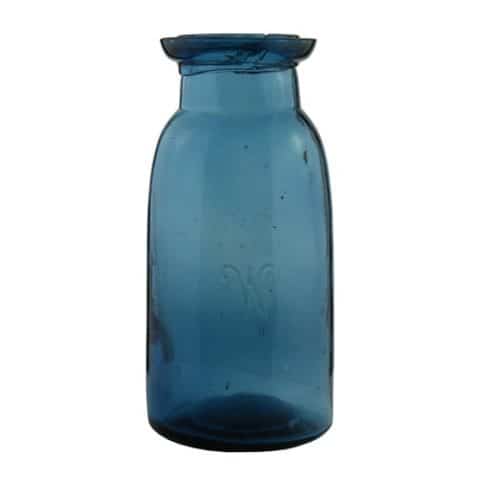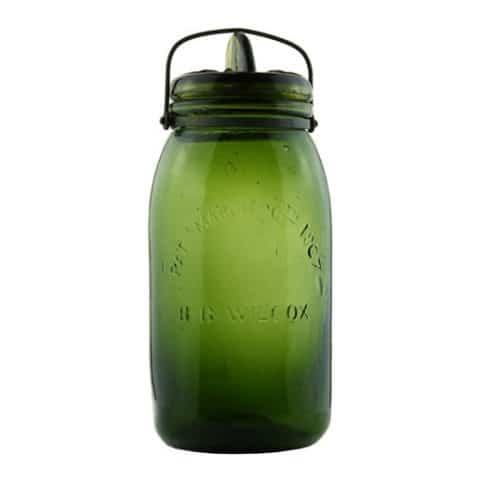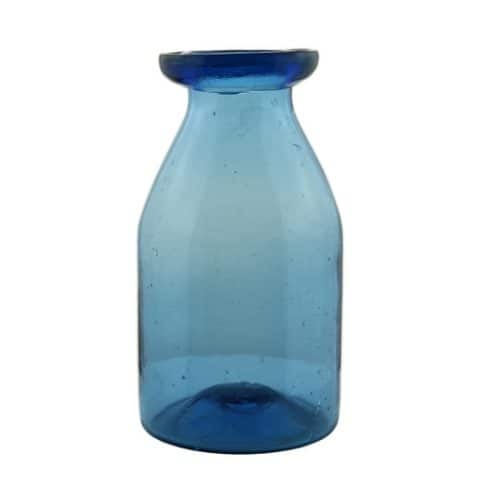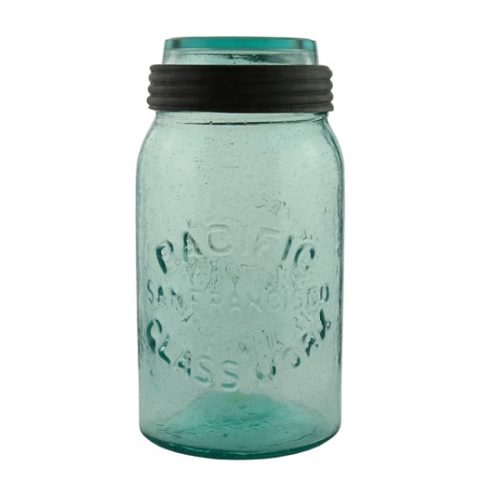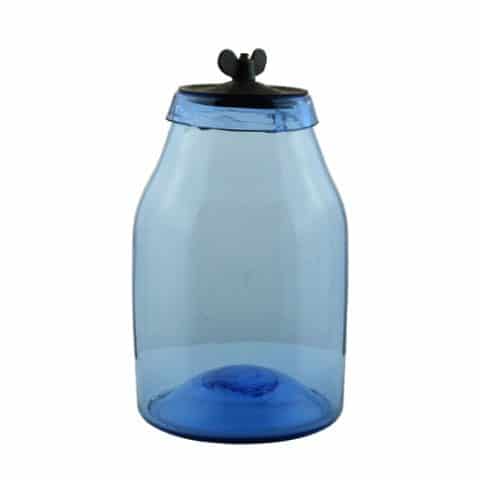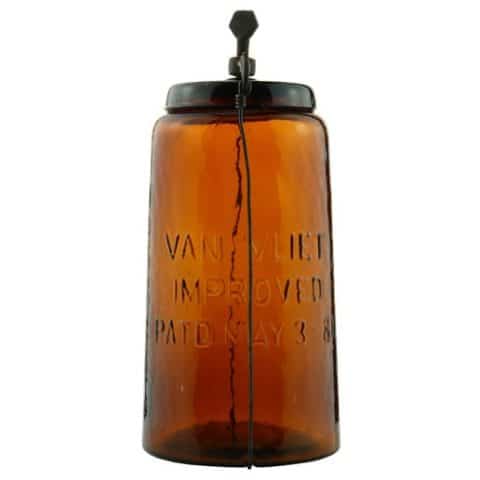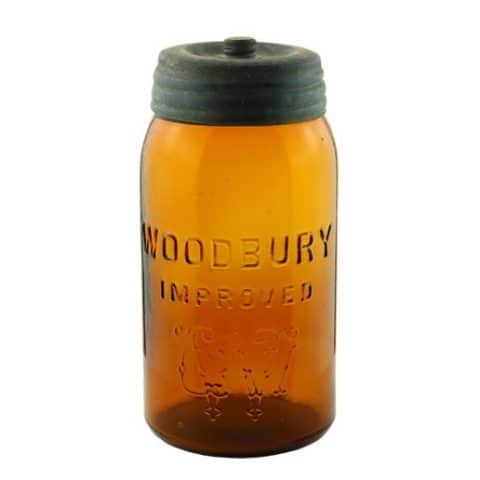The Leader
The Leader
Robert I. Patterson, Muncie, Indiana
Honey Amber Pint
Provenance: Phil Smith Collection
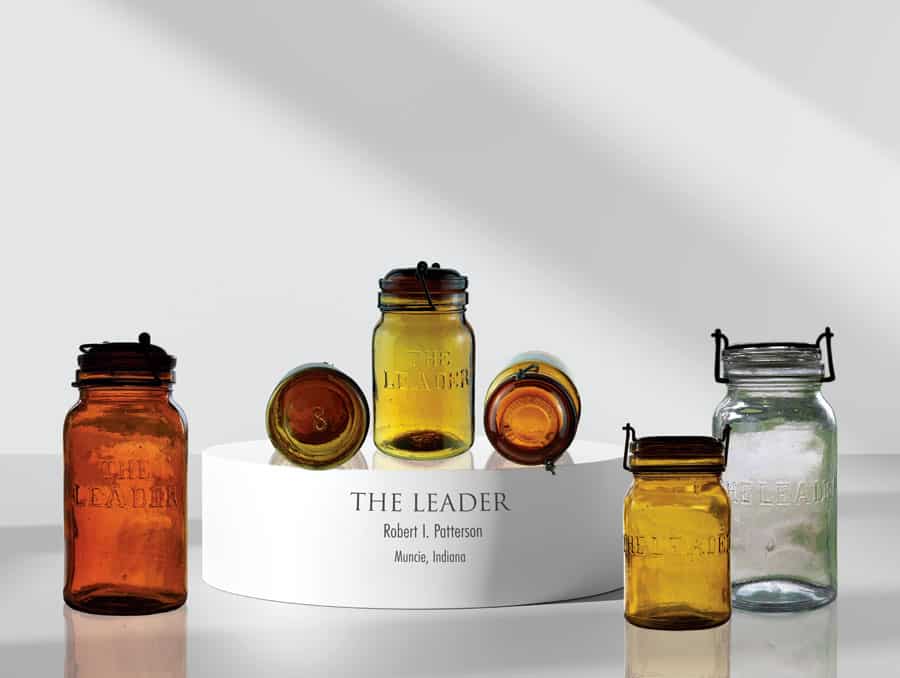
“The Leader” jars can be separated into two groups. In the first, the copy of the embossed “The Leader” occurs in one line—the second type displays the same copy in two lines. The name of the jar did not represent the lifespan as the company changed hands rapidly in a short time period after bankruptcies, fires, and worker strikes.
Our honey amber pint jar is embossed ‘THE LEADER’ in two centered lines using a distinct serif typestyle. The jar is hand blown with a ground lip. The closure is a top seal, straddle lip glass lid held down by a two-piece wire cam clamp. The wire is squarish. The domed glass lid (can also be flat) is embossed ‘PATD JUNE 28 1892’ within two embossed small band lines. The “D” is smaller, raised, and underlined. Both “8”s are crude and upside down. The base is smooth with a crude embossed number ‘8.’
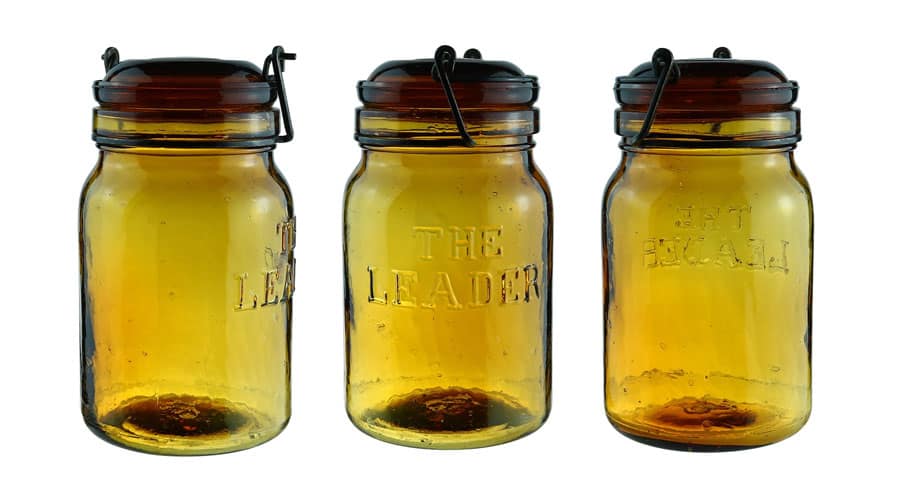
You can find “two-line Leader” jars in pints, quarts and half-gallons in clear, SCA, aqua, amber, light topaz (yellow), citron, and olive-green glass. “One-line Leader” jars are generally available in all sizes and in clear, SCA, aqua, yellow, amber and light green; however, the two-line jar is common in quart size while the one-line jar is common in pint size. Red Book has a list of the “one and two-line” variants, jar sizes, and glass colors.
Robert I. Patterson of Muncie, Indiana, patented “The Leader” jar on June 28, 1892. He followed up with a second patent in February 1894: “Robert I. Patterson of Muncie, Indiana, Fastening for Jars. Specification forming part of Letters Patent No. 515,010, dated February 20, 1894. Application filed May 19, 1893.” See Patent
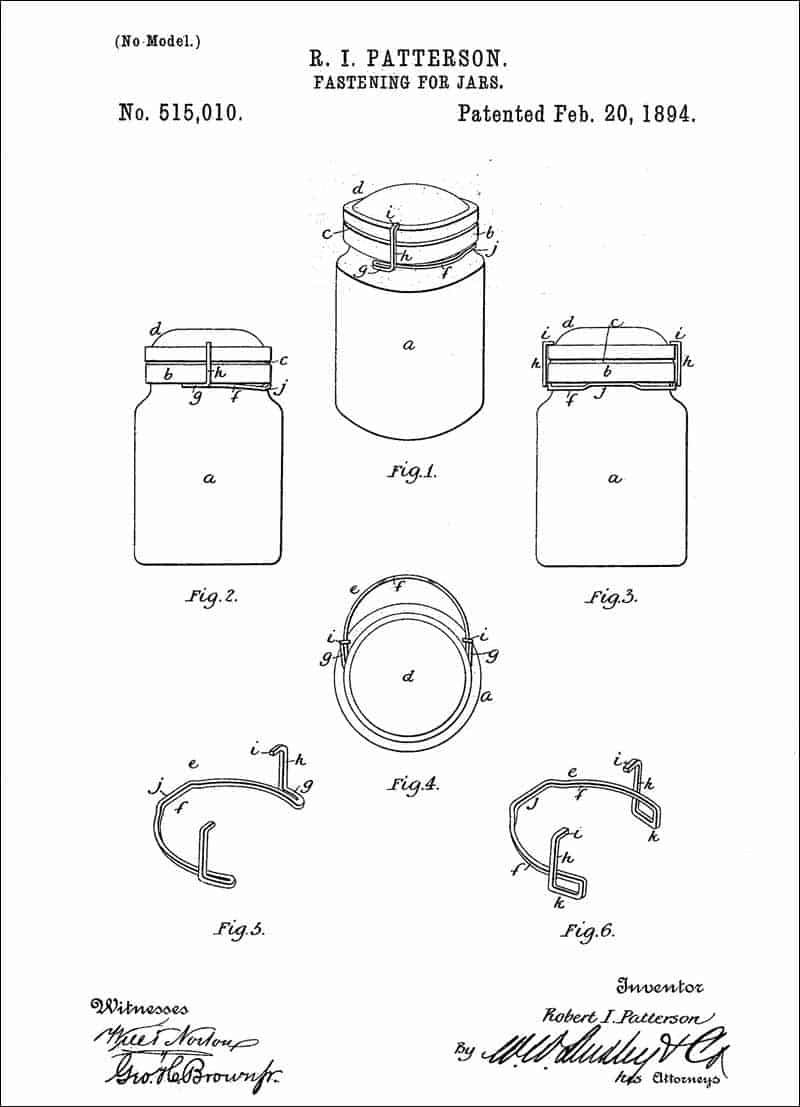
The Muncie Morning News posted on April 30, 1892: “The Scissors are Used and This is the Fruits of Their Labor. A company is being formed at Muncie, Ind. to manufacture a fruit jar and lid, the patent of Robert I. Patterson of that place. Several well-known glass men are interested themselves in the project.” By January 1893, the same newspaper reported, “Fruit cans have been turned out pretty rapidly the last week at the Patterson Glass Works, but not nearly so fast as they expect when the necessary moulds are received and the full force of blowers put on.” Another newspaper post said the “Patterson Glass Works at West Muncie was the scene of excitement in business. Everything had been completed, and two weeks ago, the fires were turned on to make ready for the start, which was commenced yesterday morning. Over 70 hands went to work, and now that factory is right in the swim with all other glass factories in Indiana. No one is happier than Ed. Moore and Chas. Ramsey who are tickled to death. They start in with the new year and all hope that this time next year the factory will still be as prosperous as it is now.”
In February 1894, Patterson Glass Works was forced to be put up for sale. “Notice is hereby given that the undersigned receiver of the Patterson Glass Company, of Yorktown, Delaware County, Indiana, by virtue of an order of sale made by the Delaware Circuit Court of Indiana at its January term 1894, will sell at public auction to the highest and best bidder for no less than $14,000 will be received as the said sale of the real estate and personal property of said glass company. With a complete factory for the manufacture of the patent Leader Fruit Jar, including engine and boiler, furnaces layers, all the necessary tools and appliances for such manufacture, and consisting of the necessary buildings constituting a complete plant for the manufacture of said fruit jars and bottles with storing sheds, with suitable offices and everything complete. Also, about 2,300 gross of Leader Fruit Jars, complete and incomplete, packed and unpacked; a lot of glass sand; soda ash, lime, charcoal, arsenic, silica, brick, salt, wire, nails, and rubber bands used in the manufacture of said jars. Also, Letters Patent of the United States number 477955, dated June 28 1892, covering the patent fastener used on the Leader Fruit Jar manufactured by said company at said glass plant. Also all other tools, machinery and supplies constituting a complete outfit for the manufacturer of said fruit jars together with a natural gas contract with the Western Improvement Company for a supply of all the natural gas required to run said factory while natural gas last. Also a contract with the firm of J. BeiswangerJr. & Co. of Baltimore, Md for the sale and future delivery of two car loads of the Leader Fruit Jar, and another with C. B. Metzger of Grand Rapids, Mich., who holds on consignment $665 worth of Leader Fruit Jars to be sold by him on commission.” With the eventual sale and changed ownership, the company was renamed Leader Glass Works after its best-selling jar.
In April 1897, The Leader Glass Company, now with a glass factory in Yorktown, sold out to Skillen, Goodin & Company, a corporation, the consideration being $10,000. Mrs. George Lenon of Muncie was president of the Leader Glass Company. The Leader Jar would be made up until 1900. In September 1916, the Skillen-Goodin glass factory at Yorktown was “closed down at 9:30 AM, possibly forever due to a strike over wages.” The shutdown had a disastrous effect on Yorktown. Operating at full capacity, the plant employed 150 men and boys. The strike was resolved, and the plant would limp on until the mid-1920s.
Primary Image: The Leader honey amber pint jar imaged on location by Alan DeMaison, FOHBC Virtual Museum Midwest Studio.
Support Image: Auction Lot 5423: Dark amber whittly quart THE LEADER (2 lines). Original glass lid (edge roughness) and original 2-piece iron clamp assembly, whittled and sparkling glass, edge flaking of the ground mouth, Embossing: strong. Base: “21” Age: late 1800s. Availability: scarce and a beautiful example in a nice dark color. – Greg Spurgeon, North American Glass, May 2013.
Support Images: The balance of support jar images are from Greg Spurgeon, North American Glass.
Support: Reference to Red Book No. 12, the Collector’s Guide to Old Fruit Jars by Douglas M. Leybourne, Jr.
Support: Reference to Fruit Jar Annual 2020 – The Guide to Collecting Fruit Jars by Jerome J. McCann
Join the FOHBC: The Virtual Museum is a project of the Federation of Historical Bottle Collectors (FOHBC). To become a member.

